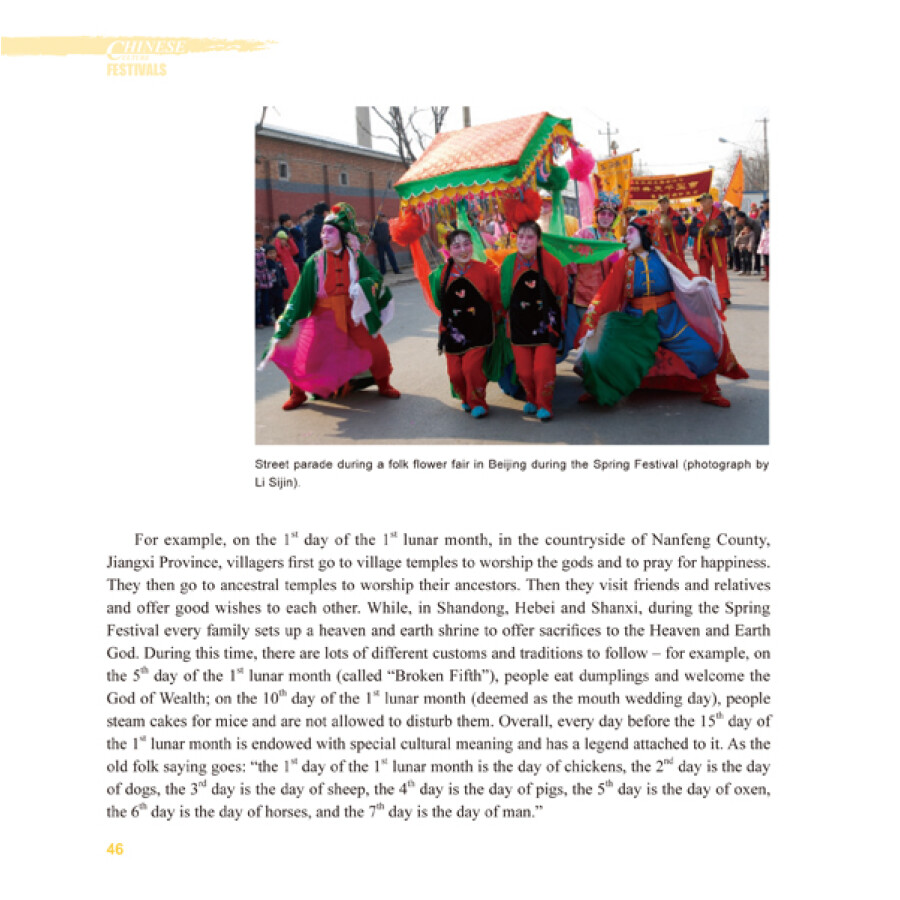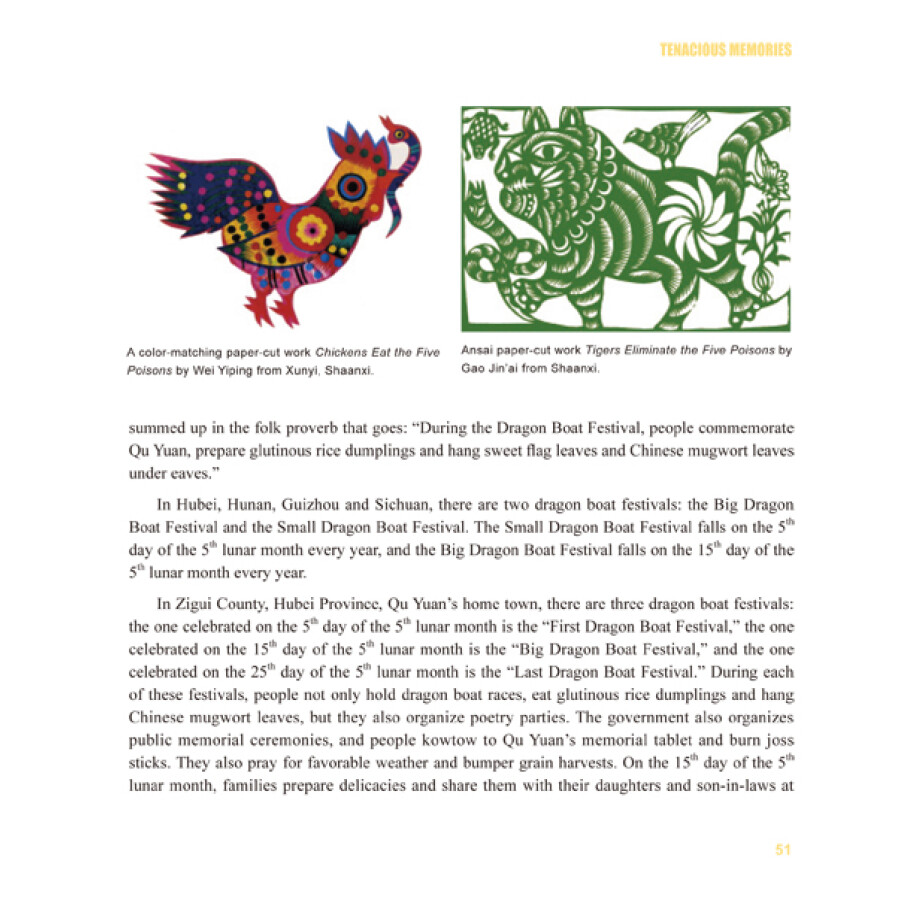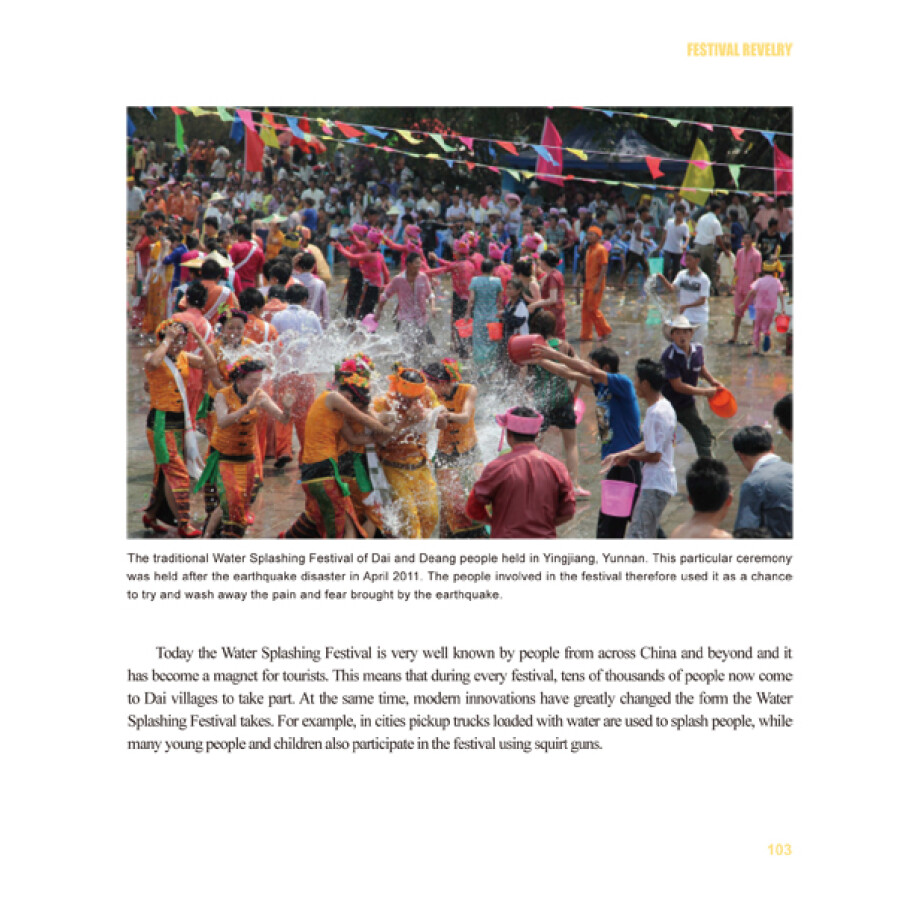Contents
Preface
Festive China
Origins of Festivals
Colorful Chinese Festivals
Festivals and Chinese Culture
Tenacious Memories
The Spring Festival
The Dragon Boat Festival
China’s National Day
Holy Sacrifice
The Tomb-sweeping Day
The Festival of the Dead Spirits
Eid al-Adha
Festival Revelry
Shehuo Performances
The Water Splashing Festival
The Torch Festival
The Rhythm of Production
The Double Second Festival
The Nadam Fair
The Sea Opening and Closing Festivals
Social Maintenance
The Mid-autumn Festival
The Drum Worship Festival
The Nadun Festival
In Praise of Life
Children’s Day
The Sisters’ Festival
The Double Ninth Festival
Singing for Love
The Double Seventh Festival
The Double Third Festival
The Mao Festival
Epilogue:
Rediscovering Festivals
Postscript
References
Appendix
Chronological Table of the Chinese Dynasties
The Mid-autumn Festival
The Mid-autumn Festival is a traditional Chinese festival in autumn. There is a saying that runs, “the mid-autumn moon is exceptionally bright,” which helps explain why this festival is also called the Moon Festival. It is also known as the Reunion Festival.
The festival takes place when, after working hard to sow their crops in spring and to tend them over summer, people finally usher in the harvest season. At this point in the year the weather is fresh and cool and orange osmanthus flowers smell sweet.
Ancient Chinese people acquired an early, in-depth understanding of the moon’s movements. They used the terms half-moon, full moon, dark moon and crescent moon to refer to the different phases of the moon. The Mid-autumn Festival falls on the 15th day of the 8th lunar month when the moon is full in mid-autumn. Therefore, the origins and customs of the Mid-autumn Festival are mostly related to the moon.
In ancient times, the moon occupied an important place in the thoughts of Chinese people. The sun and the moon are the two poles in the Chinese yin-yang philosophy of life. They also form the basis of the Chinese calendar system. The moon and the sun are considered to be opposites: the sun represents yang, the direction east and the season of spring, while the moon represents yin, west and autumn.
The Chinese people have a long tradition of offering sacrifices to the moon and of worshipping it. For example, the Altar of the Moon in Beijing was an important place for offering sacrifices to the moon. It still remains as one today.
For people in ancient China, the moon was the stuff of legends and it was a key inspiration for storytellers and poets. Many myths, legends and stories were written about the moon on scrolls. According to such legends, there is a moon palace on the moon, and it is home to the beautiful and lonely Chang’e who became a moon fairy after stealing and eating an elixir of immortality. It is also home to Wu Gang who was banished for learning from the immortals. He shares his home there with a toad, a jade hare and a cassia tree that can never be felled.
For men of letters in ancient China, the moon was thought of as a place that was far away and cold. They imbued the different phases of the moon with human emotions and linked them to the grief of parting. Poems written by Li Bai in the Tang Dynasty and Su Shi in the Song Dynasty (960- 1279) include lines such as: “Raising my head, I see the moon so bright; withdrawing my eyes, my nostalgia comes around” and “How long will the full moon appear? Wine cup in hand, I ask the sky.” Such poems still enjoy great popularity. Such beliefs underpinned the emergence of the Mid-autumn Festival, which developed to become an important folk festival in the Song Dynasty.
Mid-autumn Festival traditions include offering sacrifices to the moon, worshipping it, admiring it and enjoying it. In the Qing Dynasty, families in Beijing would set up altars in their courtyards, put the Moonlight Bodhisattva’s tablets on them, and offer melons and fruits to the moon. Then all family members would kowtow towards the place where the moon rose.
Today, in Fujian, there is a custom called “inviting the Moon Maiden”. This takes place at evening time during the Mid-autumn Festival. People put fruits and cakes under the moon, worship the moon and pray for happiness, safety and health. In Huzhou, Zhejiang and Miaoli, Taiwan, there is a Mid-autumn Festival custom called “watching the lunar corona”. According to folk legends, the moon emits a colorful light called the “lunar corona” during the evening of the Mid-autumn Festival. It is thought that anyone who sees this light will be lucky. To see the lunar corona, people set up altars under the moon, burn joss sticks, offer sacrifices such as cakes and fruits and carry out “lunar corona worship”. Some even stay up the whole night in the hope that they will see the light. In Foshan, Guangdong there is a tradition of holding parades and shows to celebrate the autumn harvest. These are called “autumn parade ceremonies” or “autumn lantern shows”. Since the Ming Dynasty (1368-1644) they have collectively been known as “autumn performances”. They traditionally include performances on suona horns, dragon lantern dances, performances on ten kinds of gongs and drums, stilt walking and lion dances. Over time, the forms and contents of the autumn performances have developed, and modern floats and competitive sport performances have been added. In the past, children in Hong Kong make rabbit-shaped lanterns, star fruit lanterns or square lanterns with bamboo paper during the Mid-autumn Festival. These were hung high on poles, which were known as “mid-autumn trees.” Today, people release sky lanterns and watch lantern shows. Fire dragon dances are also held from the 14th day of the 8th lunar month every year in the city’s Tai Hang area. These dances feature a fire dragon more than 70 meters long. This has a body consisting of 32 segments made of pearl grass. On the back of this dragon there are thousands of burning joss sticks that have been put in place to pray for longevity. In the evening of this grand ceremony, people dance in jubilation and there is an extremely lively atmosphere. In many Chinese minority ethnic groups, the Mid-autumn Festival is celebrated in characteristic ways. Young Deang men and women in Yunnan have a Mid-autumn Festival custom of “stringing the moon”. Under the light of the bright moon, they pour out their inner feelings to each other and get engaged by giving gifts such as betel nuts and tea. Dong people in Hunan have a popular custom called “stealing moon vegetables”. This takes place during the evening of the Mid-autumn Festival. As part of this custom, Dong girls, holding flower umbrellas, pick melons and vegetables in the gardens of the young men they love. As they are doing this they shout loudly: “Hey, I have taken away your melons and vegetables. Come to my home and drink some buttered tea!” This is an important way for young Dong men and women to express their love for each other.
The moon is full during the evening of the Mid-autumn Festival. This is the origin of the Mid-autumn Festival’s theme of reunion.
Moon cakes, melons and fruits are the main sacrifices offered to the moon during the Mid-autumn Festival. As the saying goes: “On the 15th day of the 8th lunar month when the moon is full, watermelons and moon cakes are put in front of statues of gods.” These foodstuff are also the most common foods eaten in mid-autumn.


